On August 16, over 400 people braved the corn sweat to celebrate the opening of the fifth edition of Exhibit Columbus (EC), a self-described “exploration of community, architecture, art, and design that activates the modern legacy of Columbus, Indiana.” The main event took the form of a walking tour, which guided attendees to all 13 of this year’s installations: six by University Design Research Fellowship winners; four from J. Irwin and Xenia S. Miller Prize recipients; two community-led projects; and one environmental graphics package by Sing-Sing.
This year, contributors responded to the curators’ theme of Yes And, an invitation borrowed from improv theater that encourages performers to accept and then expand on what another performer has said. For EC, the idea is to affirm the town’s legacy while imagining new futures.
This year’s curatorial partners included Joseph Altshuler and Zack Morrison of Could Be Design, which participated in the last Exhibit Columbus cycle (Altshuler is also an AN contributor); Mila Lipinski, an architectural associate from Columbus (and a high-school participant in its 2017 cycle) who works at Duvall Decker; Rasul Mowatt, a writer and educator who is currently the department head and a professor at North Carolina State University; Chicagoans Elizabeth Blasius and Jonathan Solomon of Preservation Futures (Blasius is a former Midwest editor of AN); and Too Black, an Indianapolis-based poet, scholar, organizer, and filmmaker.
On the evening before the walking tour, a welcome reception at the Inn at Irwin Gardens (the original home of the Irwin family) gathered participants, curators, board members, donors, special guests, press, and media. A sense of excitement and anticipation hung in the air, in addition to the humidity. Mark Elwood, board of directors chair of the Landmark Columbus Foundation (LCF), compared it to the Olympics: You train for two years and then you get two weeks to perform. Later, the party migrated to the top of a downtown parking garage to witness the debut of Joy Riding by Studio Barnes, a speaker assembly inspired by the Midwest’s car culture.
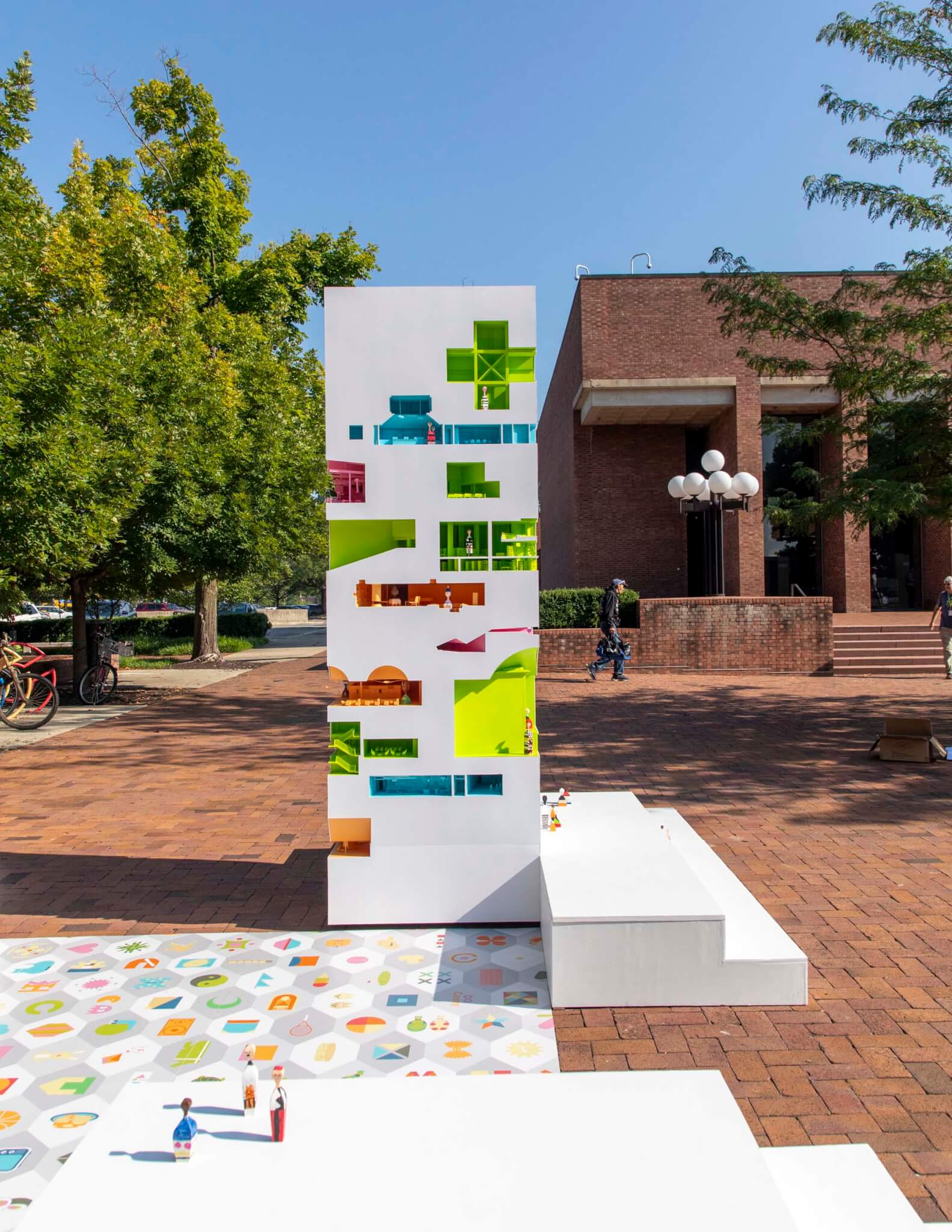
The six University Design Research Fellowship projects were Inside Out by Chandler Ahrens, Constance Vale, and Kelley Van Dyck Murphy from Washington University, a tower made of model interiors from the town’s well-known buildings, populated by Girard-like dolls made by local youth; Pool/Side by Akima Brackeen from the University of Illinois Urbana-Champaign, which installed a shallow wading pool set within a purple plinth in front of I. M. Pei’s Cleo Rogers Memorial Library; The Steel Horsie by Andrew Fu, Aaron Goldstein, and Aleksandr Mergold from the New Jersey Institute of Technology, a demountable space frame of signpost extrusions anchored by blocks of recyclable scrap metal; Apart, Together by Michael Jefferson and Suzanne Lettieri of the Cornell University College of Architecture, Art, and Planning, a lenticular sign with chroma-keyed colors that came alive through an augmented-reality app programmed with films and local archival footage; PUBLIC/SCHOOL/GROUNDS by César Lopez, Jess Myers, Amelyn Ng, and Germán Pallares‑Avitia of the University of Virginia School of Architecture, Syracuse University School of Architecture, Columbia GSAPP, and Rhode Island School of Design, respectively, who created a playscape inspired by school buildings and lined with custom carpets as an outdoor classroom; and A View of the World from Indiana by Sarah Aziz from the University of New Mexico School of Architecture and Planning, which sported a dozen bathtub Madonnas adorned with sculptures of Midwestern architects under a crane-supported banner that read NOTHING TO SEE HERE.
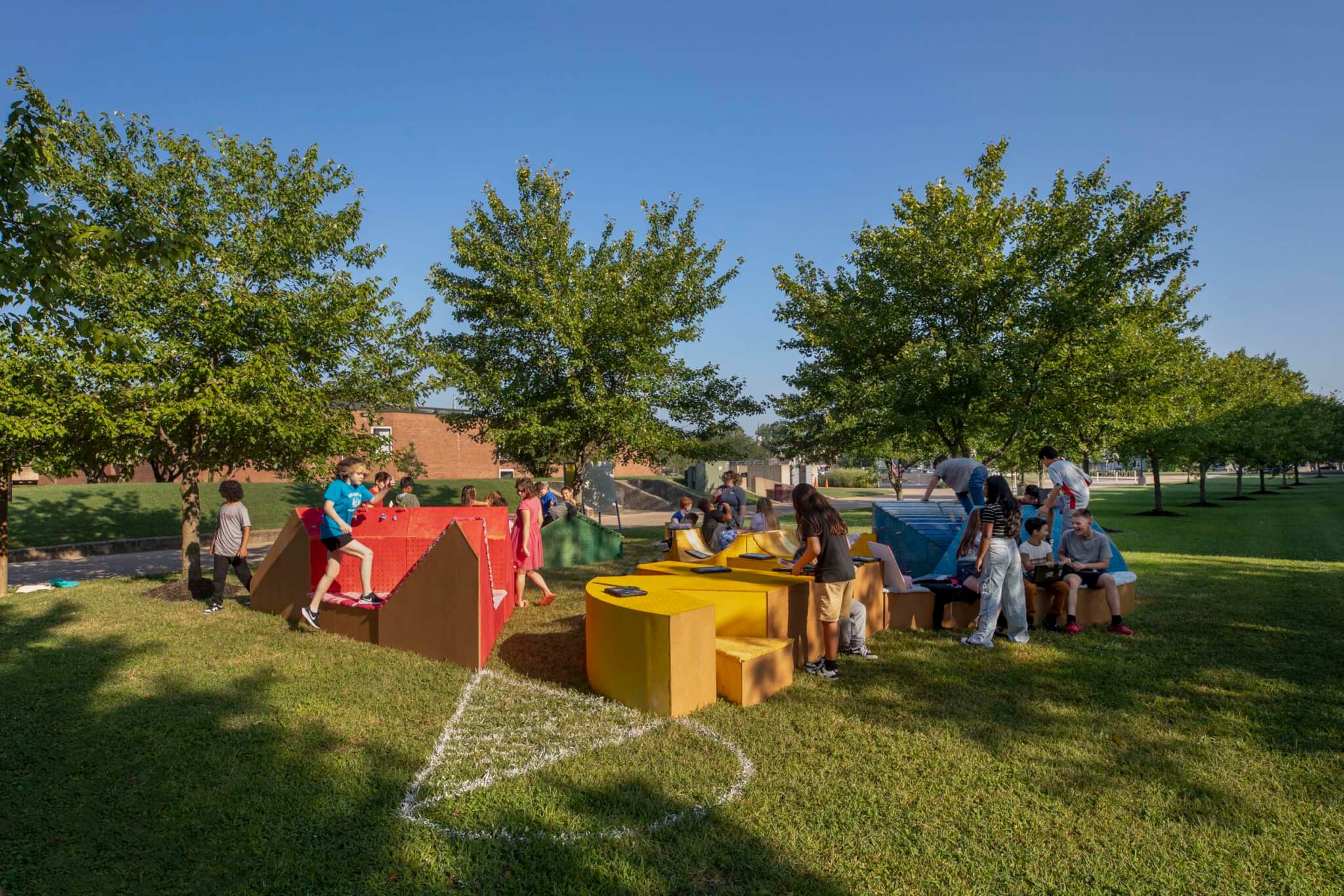
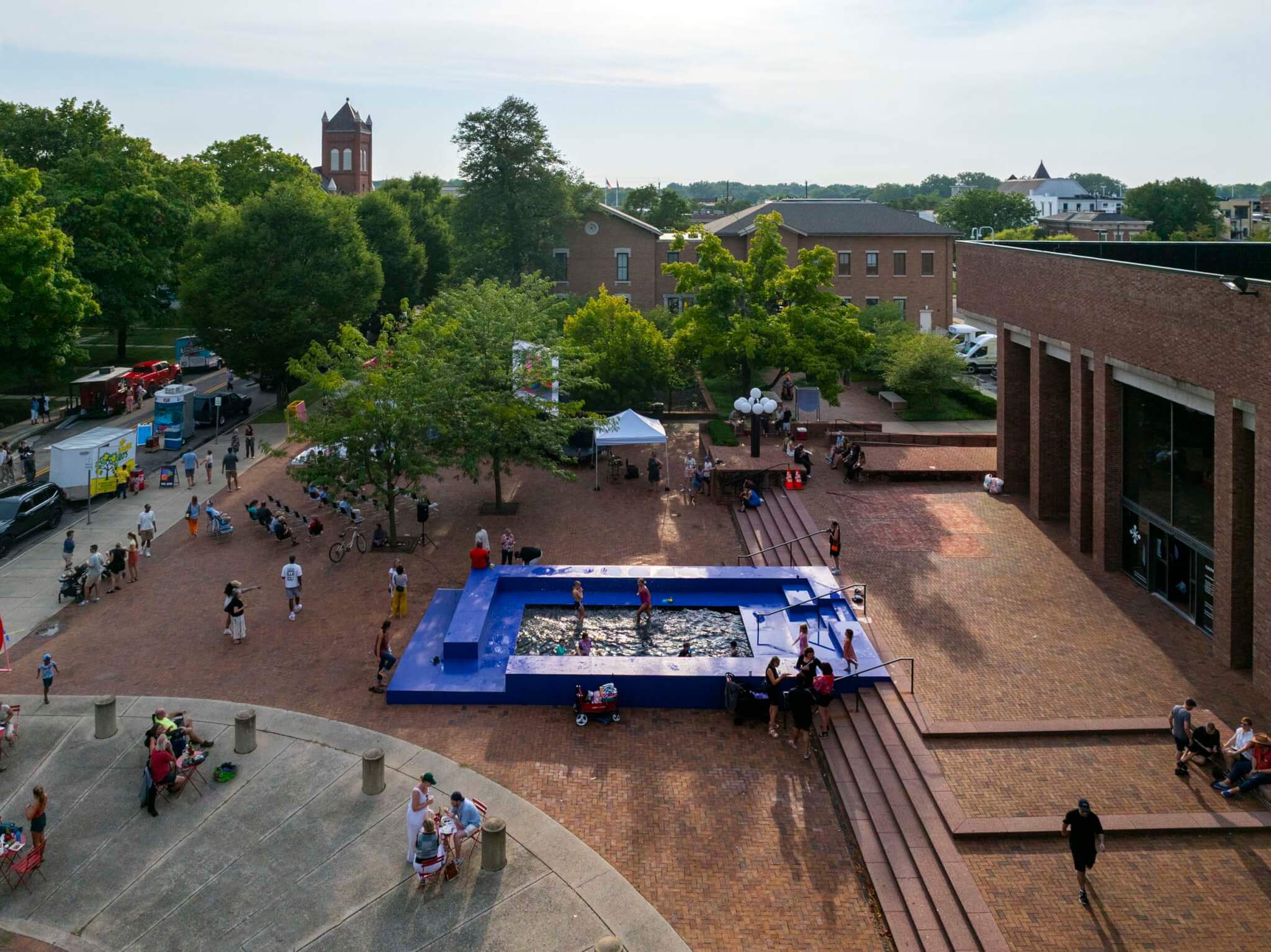
This year’s show involved some controversy. Aziz’s piece, installed on the lawn of St. Peter’s Lutheran Church, which includes a K–8 school, was removed after the opening weekend. Aziz told AN that she “wasn’t provided a clear reason and had several false accusations hurled at [her.]” Some of the wooden figures, carved by artist Steve Carner, were nude. Aziz offered to cover their privates with cloth, but this upset Carner, who limited the display time of his artworks to three weeks. (Originally the shrines were meant to be populated by models of prominent buildings from the twelve states that make up the Midwest, but in early July, Aziz decided to include the sculptures instead.) Aziz said these changes were approved by all parties, while LCF executive director Richard McCoy said Solomon and LCF worked with Aziz to review the new concept “to make the entire piece suitable for public display.” He noted that “additions and changes were ongoing through the installation process, some of which were neither understood nor approved.” St. Peter’s reviewed the work during installation and allowed it “to be on their property” for the weekend. The banner was only flown during the opening days.
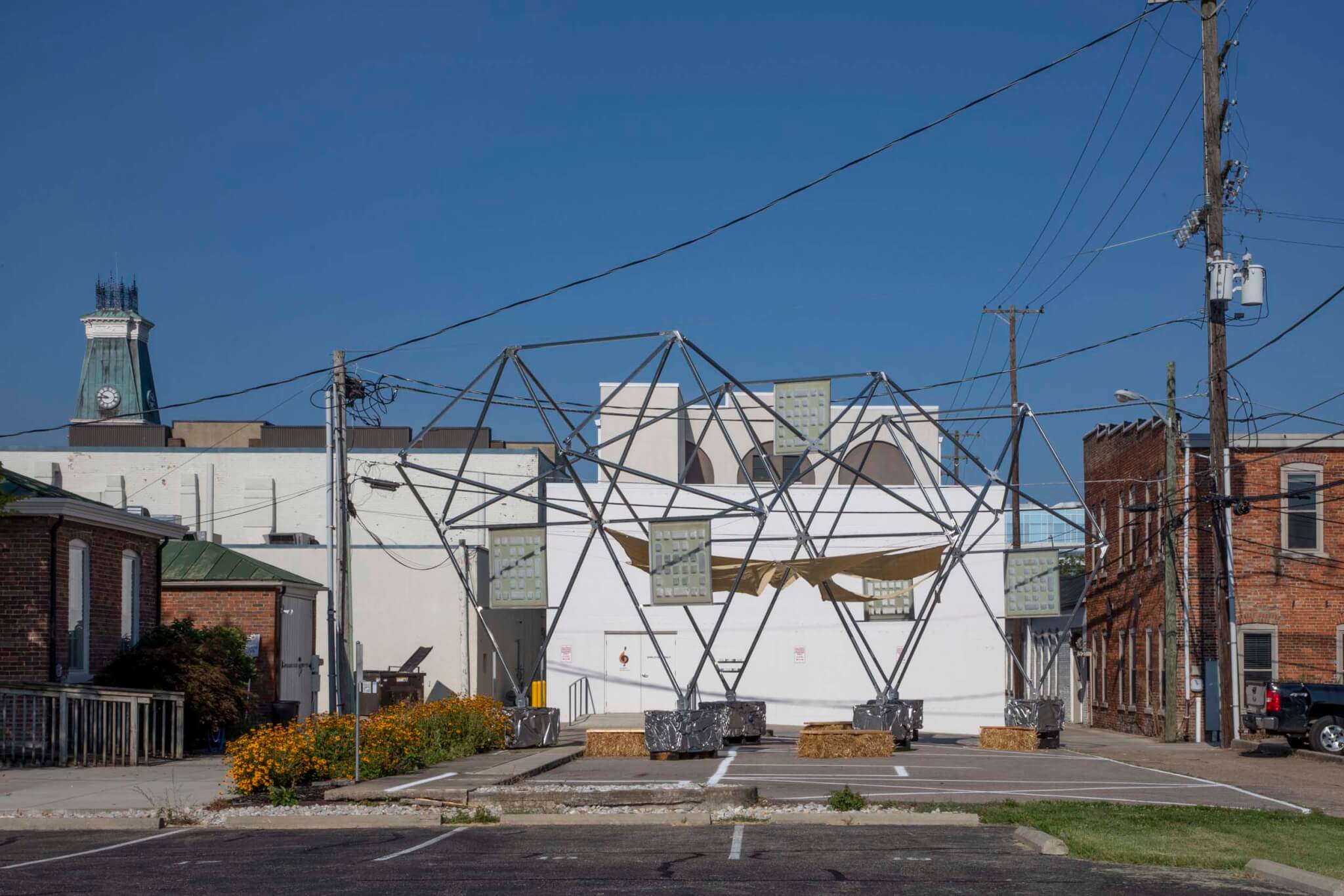
Afterwards, the church complained, and EC directed Aziz to take down the entire installation. McCoy noted that the “request was not specific to the sculpture but the totality of the installation.” EC’s press release stated that the work was “removed due to Sarah Aziz’s late and unapproved changes to the concept and its resulting on-site execution. As installed, the work did not meet Exhibit Columbus’s high standards.”
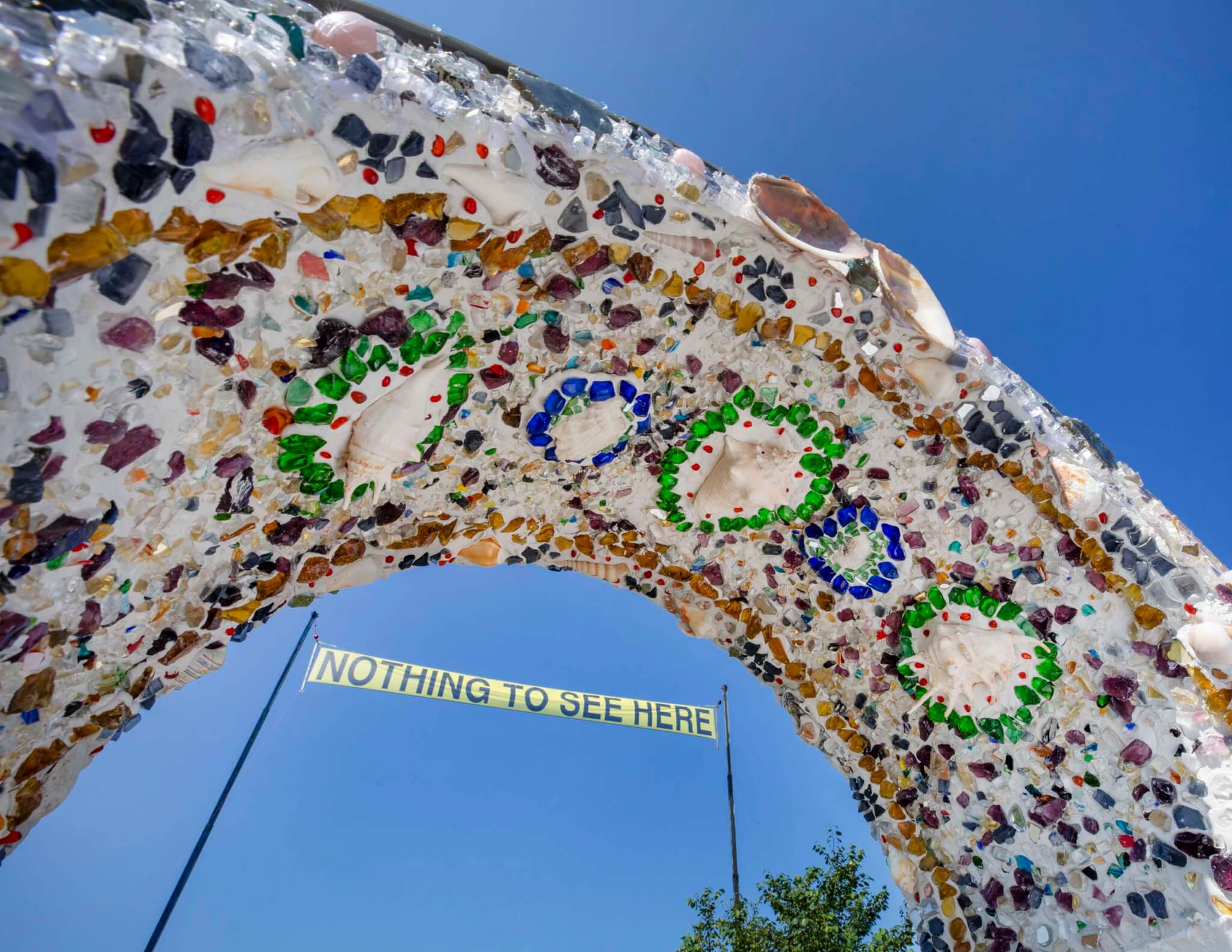
Aziz said the church was supportive during the project’s realization, but apparently this was not the case internally: In an email newsletter sent after the opening, St. Peter’s wrote, “the outcome of this partnership was not what we had hoped for, and it left us very disappointed.” Aziz said the fragile grottoes were damaged when they were relocated to a “garden opposite the church” where they will be on view.
See below for images and descriptions of the four Miller Prize installations.
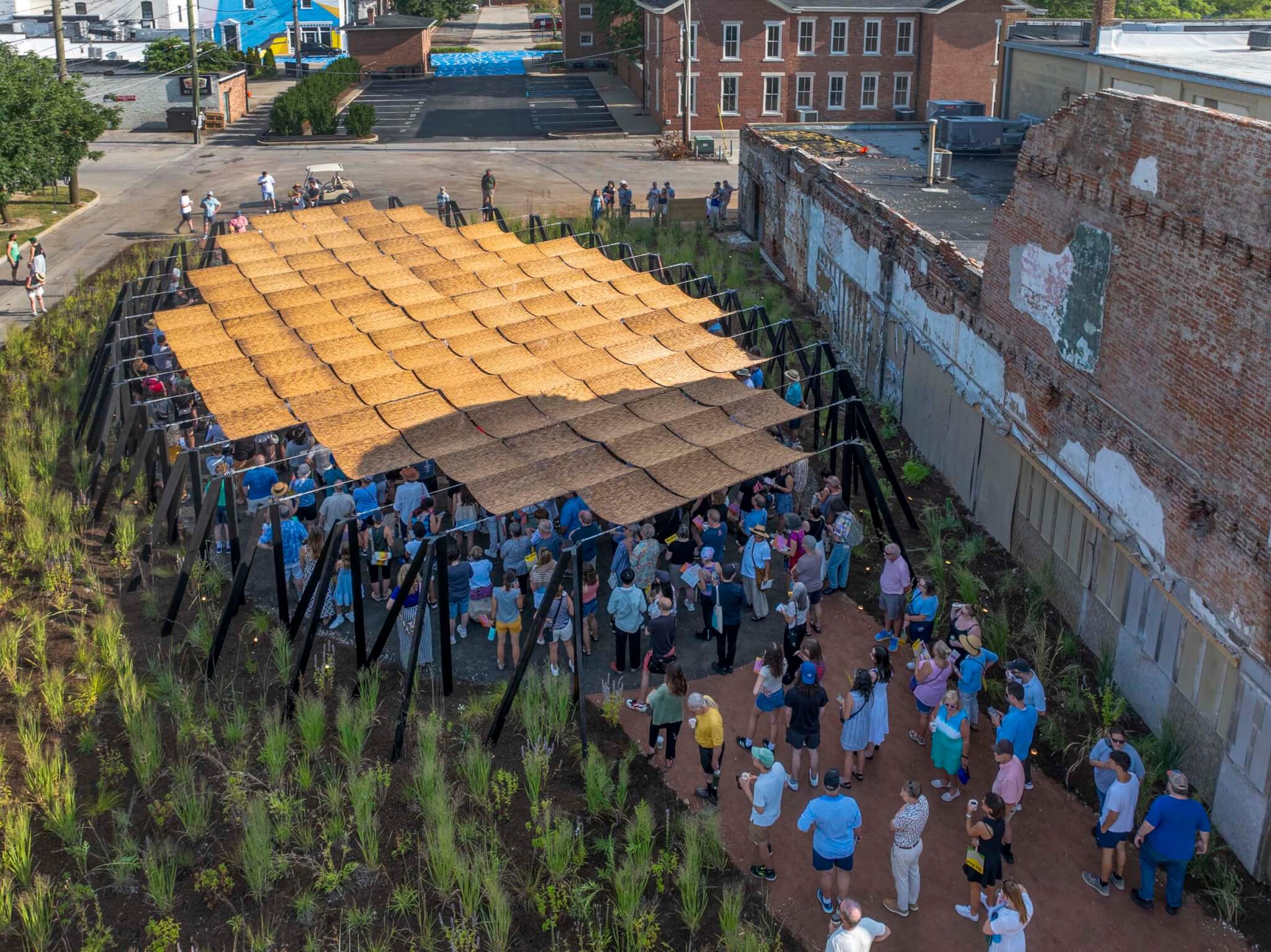
Ellipsis by AD—WO
The Irwin Block was a prominent Victorian building downtown; it burned down in December 2022, leaving a vacant lot. AD—WO responded with the elliptical design of a pavilion consisting of tripod-like columns that anchor cabling with bamboo shades surrounded by planted berms. Speaking to the crowd, AD—WO cofounder Emanuel Admassu connected the idea of an ellipsis—the three dots that signal an absence—to the geometry of an ellipse. AD— WO cofounder Jen Wood discussed thinking “about fire as a disruptive force, but also a force of repair, restoration, and resilience.” To that end, the surrounding berms have been landscaped with native plant species.
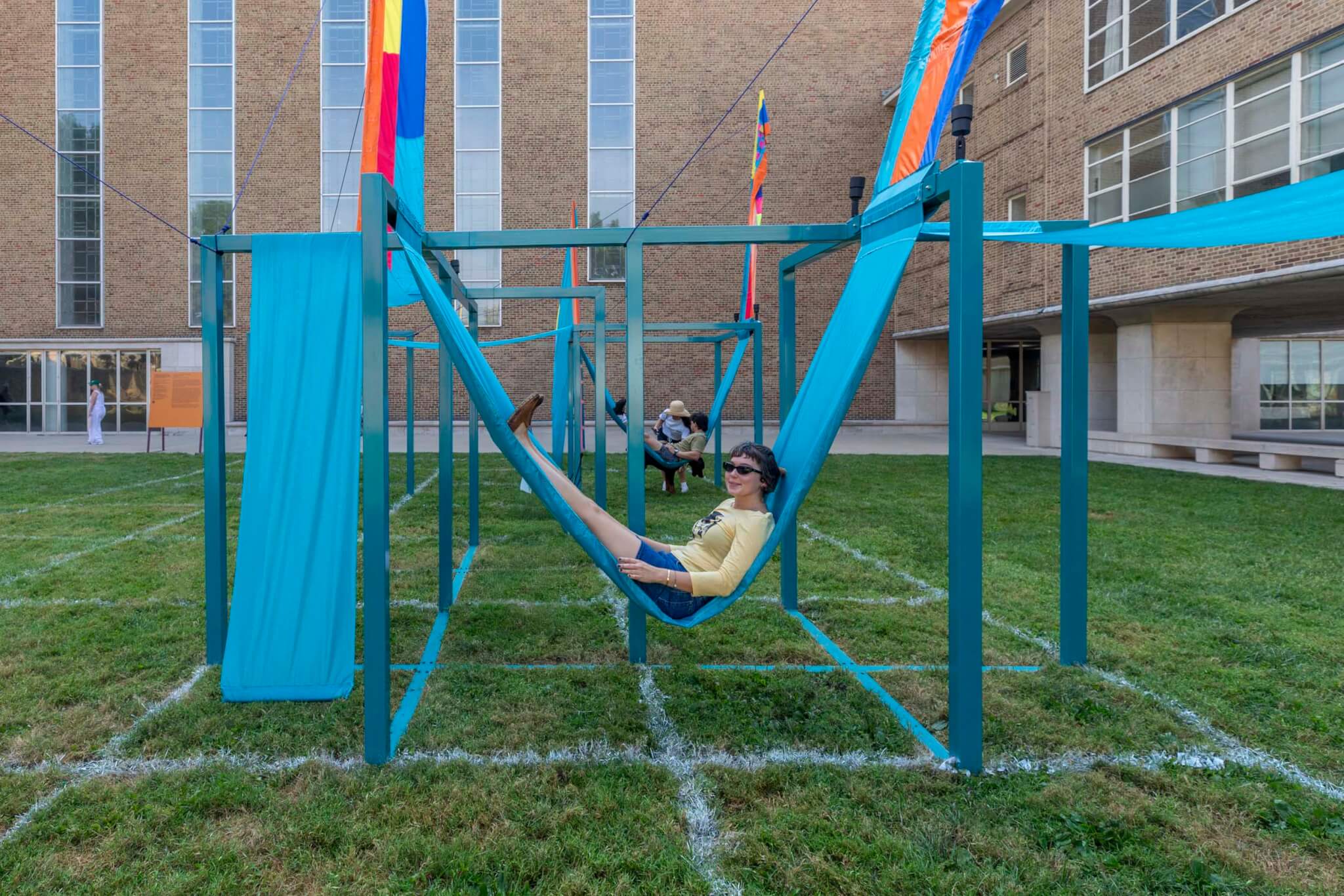
Lift by Studio Cooke John
In the sunken court of First Christian Church, Studio Cooke John founder Nina Cooke John translated the grid of Eliel Saarinen’s facade to the ground and made it inhabitable through a series of frames. These portals are enlivened with the pageantry of large fabric banners inspired by kites. The tall pieces can be seen from the street above and might draw curious passersby. Cooke John anticipated their use as a hang-out space and saw it as the realization of a desire to let everyone in Columbus and beyond know that this congregation is a “living, breathing, and welcoming community.”

Accessing Nostalgia by Adaptive Operations
Charlie Vinz leads the Chicago-based office Adaptive Operations with a focus on adaptive reuse. Here, at the Crump Theatre, Indiana’s oldest known theater still in operation, Vinz has repurposed metal siding as the roof for a wood-framed canopy. Underneath, the earliest wall of this historic building, which dates from 1871, is now on display. On the facade of the theater, 130 silhouettes of Columbus residents who have helped maintain the building are displayed in the shape of an arched window that was originally there in the early 20th century. Vinz said he was thinking about the traps of nostalgia when engaging in progressive preservation.
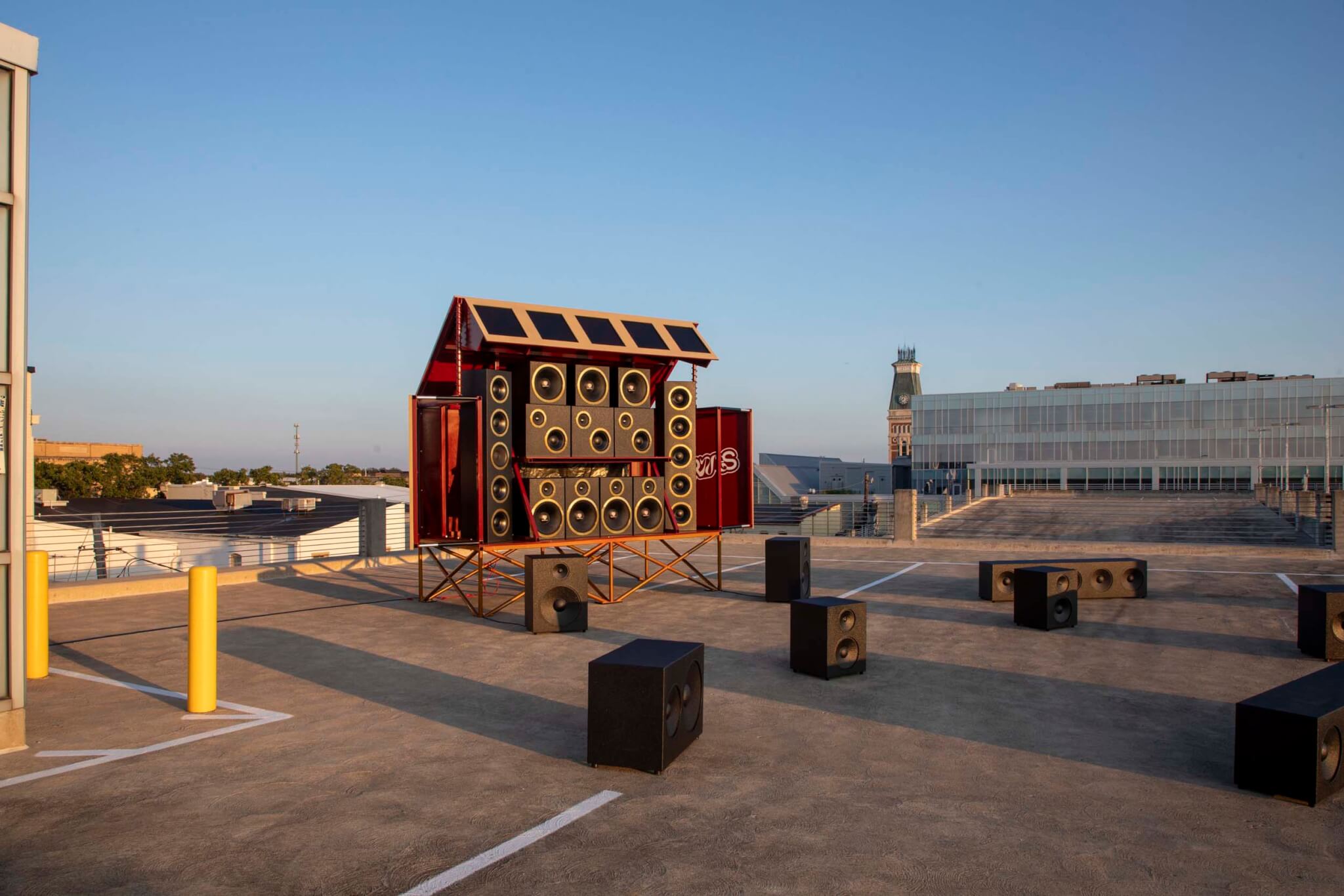
Joy Riding by Studio Barnes
Constructed by Matchless Builds, Barnes’s trunk-like sound system is interactive: The piece is Bluetooth enabled, so visitors can connect and play their own music during designated hours. Barnes told the crowd he was inspired by “the feeling you got when you first passed your driver’s test, got your license, and told your parents, ‘I’m leaving, and I don’t know how long I’ll be gone.’ And then you blast the music really, really loud, and you’re doing everything with your friends.” Barnes thanked the city of Columbus “for allowing us to break all of your rules, because there are a lot of rules.”
→ Continue reading at The Architect's Newspaper
